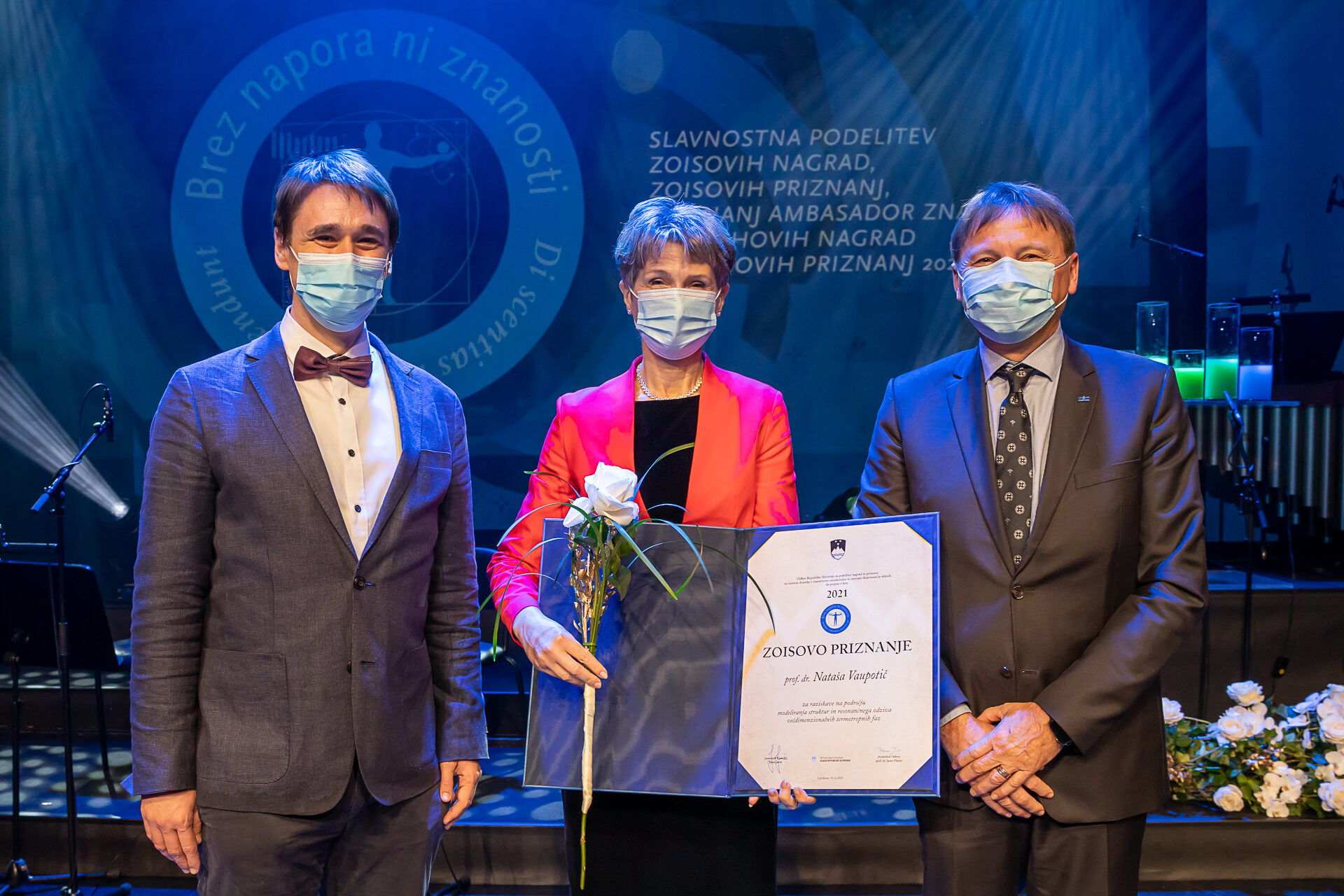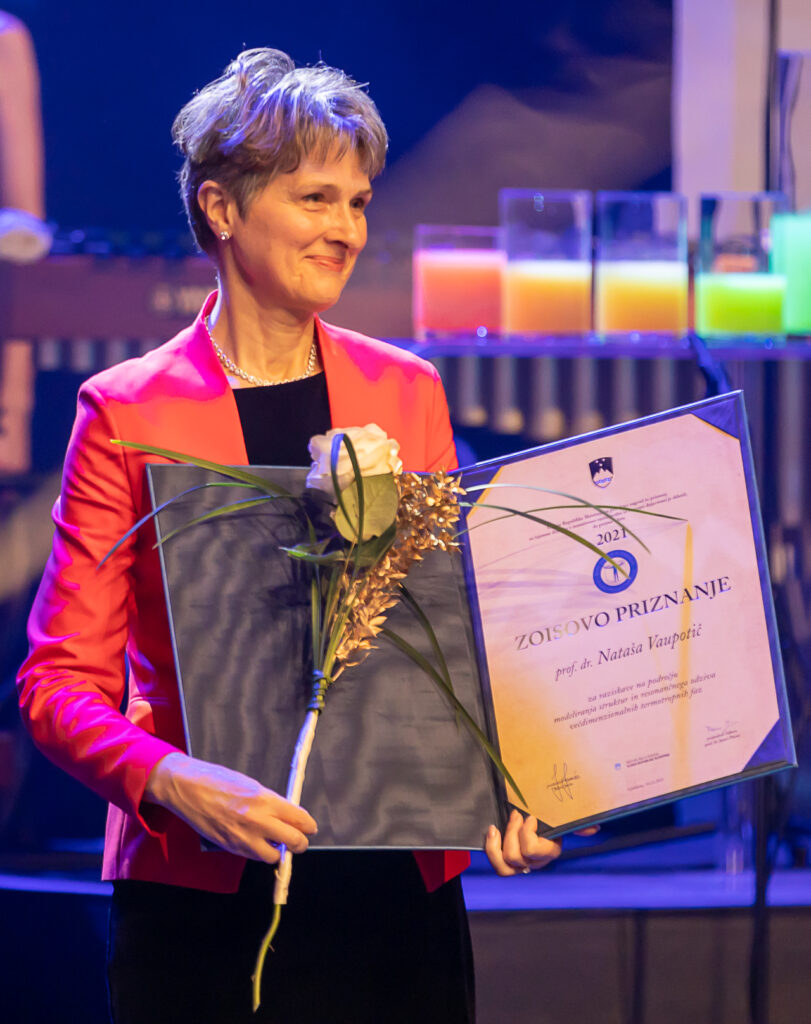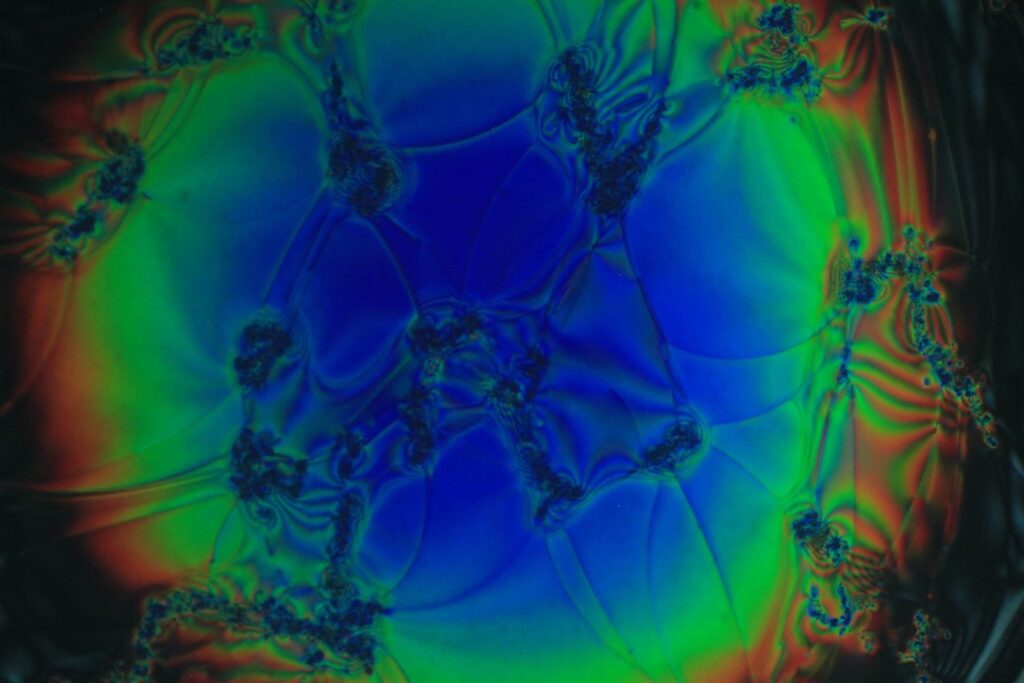Prof. dr. Nataša Vaupotič was awarded the Zois Distinction for outstanding research achievements
On Friday, 10 December, the state awards and distinctions were awarded for outstanding achievements in science and research in 2021.

At the forefront were nine male and eighth female researchers, three of them were awarded lifetime achievement awards – Anuška Ferligoj and Julijana Kristl the Zois award and Borka Jerman Blažič the Puh award.
Among the receivers of the Zois Distinction for outstanding research achievements was also prof. dr. Nataša Vaupotič from the University of Maribor.
Prof. dr. Nataša Vaupotič is employed in the Department of Physics at the Faculty of Natural Sciences and Mathematics of the University of Maribor. She engages in research of liquid crystals which present the basis for the operation of all displays. She was awarded the Zois Distinction for research in the field of modelling of structures and the resonant response of multidimensional thermotropic phases. Her research focuses on the theoretical modelling of liquid crystals and their practical use according to their response to external influences.

MORE ON THE RESEARCH WORK of prof. dr. Vaupotič:
Prof. dr. Nataša Vaupotič engages in research pertaining to the modelling of structure and response of various liquid crystals phases. We all know liquid crystals, since they enable the operation of displays in our devices, such as mobile phones, computer monitors, TV screens, etc. Scientists are still synthesising new more or less complex organic molecules and seek new liquid crystals phases with new useful characteristics for new applications.
Materials which prof. dr. Nataša Vaupotič is dealing with are currently interesting from the viewpoint of basic science, since they fascinate us again and again with unusual structures into which molecules can assemble as well as from the viewpoint of potential use. There are two types that deserve to be highlighted. The first are materials that are built by bent molecules. Although molecules have a reflection symmetry, they form structures that have no reflection symmetry. With the combination of resonant x-ray scattering, which provides information also on the direction of the chemical bond, and modelling, together with her colleagues, prof. dr. Nataša Vaupotič has discovered and described a really unexpected arrangement of these molecules in the layer. In each neighbouring layer the molecules are namely rotated for approximately 90 degrees compared to the previous one. This basic structure “rolled in 4 layers” is then additionally “rolling”.
Each model explains and predicts at the same time. In this case, for example, the model provided a clarification why the structure begins to roll in the first place and at the same time predicted that there could also be materials that would double roll into a helix with the length of visible-light wavelength, however, such structure would reflect the light with the wavelength equal to the length of the helix. Materials with the so called photonic band gap were discovered last year. Until this discovery it was understood that such selective reflection was achievable only in helical structures formed by molecules without reflection symmetry. The colour of the reflected light is changing with changes in temperature. Such materials have a very wide potential applicability – from colourings to elements for optical computers.
Another highlight is research work in the field of three-dimensional phases. Those are interesting due to the complexity and possibility of usage: they are robust, viscous and at the same time plastic. Therefore they can be used for the production of fibres, for thin protective or conductive coatings. They could be used for transferring information through channels, since, even if there are any defects, the signal will find a way because of the connective network. Another potential use is for organic solar cells, if it can be achieved that the centre of the channels transfers e.g. the positive and the outside the negative charge.
In the last year, groups that cooperate with prof. dr. Nataša Vaupotič have managed to explain how molecules are arranged in one of the three-dimensional structures, in the double-gyroid structure. Again, the answer was in the resonant x-ray scattering in relation to modelling of the response of various possible structures. Since these are materials where the base cells contain more than 1000 molecules, it is crucial that the calculations are simplified. Therefore, one of the key tasks of the laureate was to find out what needs to be considered in order for the results to be reliable (find the so called minimum model) and show that all other upgrades do not bring a new physical effect.

A look through the microscope on the newly discovered material where the colour of the reflected light depends on the temperature of the material. The temperature of the sample is changing radially from the centre outwards. In this material molecules are arranged in layers and the direction of the long axes of molecules is rotating from layer to layer. On the short helix with a length of approx. 4 layers (a couple of 10 nm), there is another helix, the length of which is comparable with the wavelength length of light (400 to 700 nm).



